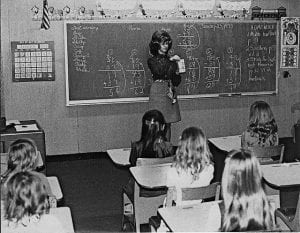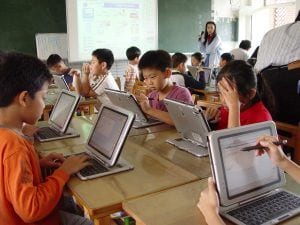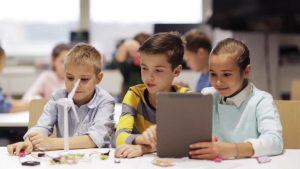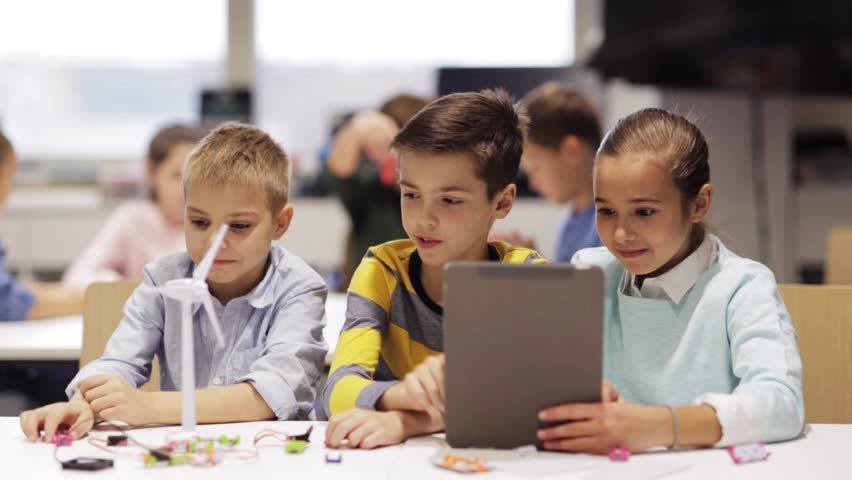How has technology changed education?
When a Stanford University professor offered a free online course in artificial intelligence in 2011, it attracted more than 160,000 from 190 different countries. He could certainly not have guessed that the course would have such a large online audience, especially for that time period. So how has technology changed education and the views towards the combination of those two?
Books used to be rare and only an elite few had access to educational opportunities. People needed to travel to centres of learning to have access on educational opportunities. Today, massive amounts of information (books, audio, images & videos) is available at one’s fingertips online while formal learning opportunities are available online through the Khan academy, MOOC’s, traditional online degree programs and podcasts.

The traditional way of a classroom would be a room full of desks and students with open books holding pens with the teacher standing on the front middle of the room, explaining and writing on the black board. This may not be as evident in the UK but if you think of less developed countries it is. This situation may have worked well in the past, but the world we live in is a lot more digitized and a lot more globalized.
In an era where robots are starting to replace human work but access to education is limited or minimized for some at the same time, its a bit old-fashioned to think of education in this way.

Technology is changing the dynamics of education, especially the relationships between teachers and students. Classrooms are becoming places where knowledge is created rather than consumed.
Since technology has given students the ability to have more control over what they use to help them learn; schools and universities should have spaces supporting more creative/generative activities. This will create more mobility towards activities in and out of the classroom.
Virtual and face-to-face interactions are equally important and analog materials such as whiteboards, paper and notebooks are still going to be used to capture and visualize content better. The optimal class would be the combination of virtual and face-to-face learning. How can this be achieved?

New Technologies like AI, machine learning and educational software aren’t just changing the field for students, they are shaking up the role of educators; remodeling the classroom.
Assistive Tech for Better Communication: voice recognition software has improved the way children with special needs and limited English proficiency who are able to more effectively communicate in language based contexts. Moreover, the iPad (which has transformed learning in general, with the use of different apps) has enhanced learning experiences of those with special needs; particularly those on the autism spectrum.
-Google for Education; including Google Chromebook trusted by teachers and schools around the world designed specifically for school systems. They are fast, easy to use and gives students access to a library of apps which they can use to learn.
-For maths; Dreambox, Zearn and ST Math are software programs used to adapt to students as they learn.
-In the area of Language Arts, programs like No Red Ink, Achieve 3000 and Newsela, provide students with ways to easily understand reading and writing.
-Software allowing educators to manage and test their classrooms like Quizlet .

The biggest advantage of technology and education is understanding that not every child can learn the same things and in the same way with the child next to it. “Dreambox” for example, is a math education software (used in a number of schools in the US) which adapts to each student’s skill level and lets students learn at a pace best suited to their needs.
Technology has certainly changed education in a lot of ways and we are awaiting for a lot more and a greater educational access across the globe.


